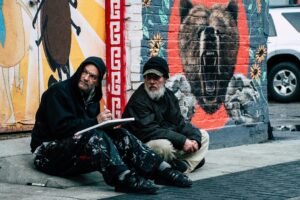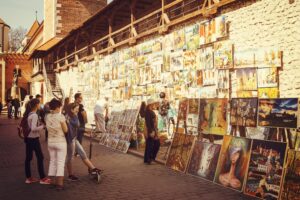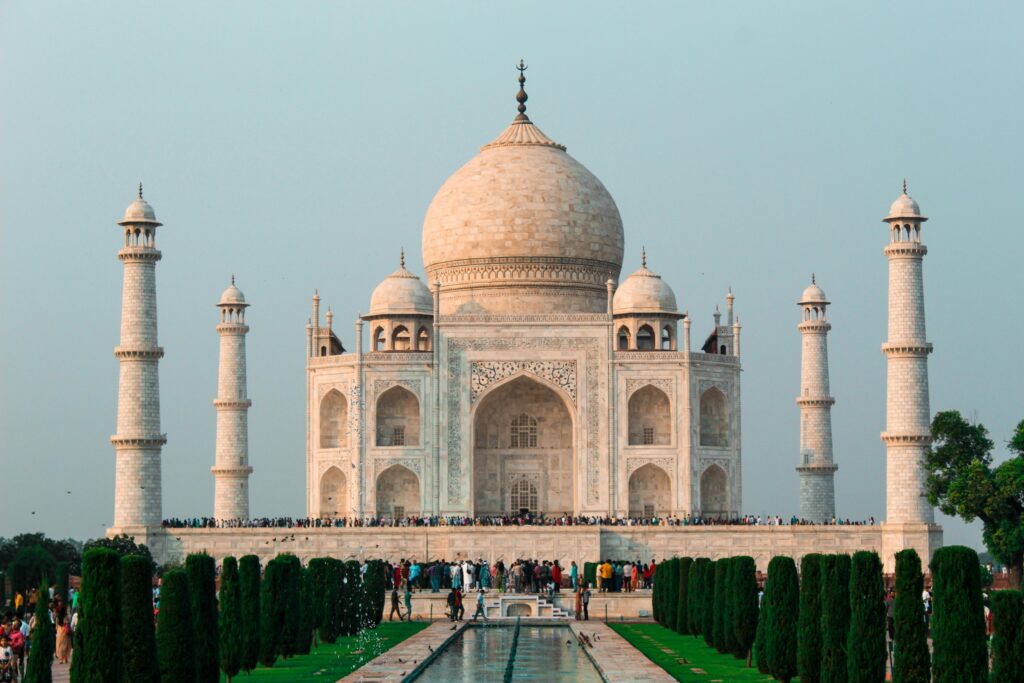Street artists or urban artists have been making streets a canvas since decades. Street artists utilize walls, footpaths, and other features of cityscapes to showcase their creativity, bring forth powerful messages, and challenge the conventions of society. Anything other than acts of graffiti, street art is a legal, even respected, form of art that connects with individuals in communities worldwide.
What is street art?
Street art is an art form created in public space. It consists of graffiti, murals, stencils, wheat-paste posters, and even 3D artwork. Unlike conventional art that is locked up within galleries or museums, street art is accessible to everyone, closing gaps and making the art experience democratic.
International Evolution: By the 1980s, graffiti had evolved from simple tags to complex murals and stencils. Artists like Jean-Michel Basquiat and Keith Haring became famous, mainstreaming street art.
Renowned Street Artists
Banksy: Perhaps the most famous street artist, Banksy is known for his satirical and thought-provoking stencils. His work, such as “Girl with a Balloon” and “There Is Always Hope,” often addresses political and social issues.
Shepard Fairey: The creator of the ubiquitous “OBEY” series and Barack Obama “Hope” poster, Fairey uses his artwork to address issues of propaganda and social justice.
JR: This French photographer produces enormous photographic installations, commonly focusing on marginalized groups. His “Inside Out” project encourages everyone on the planet to contribute to public art.
Lady Pink: A pioneer among the first female graffiti artists to infiltrate the boys’ club of graffiti in the 1980s, Lady Pink’s colorful murals empower women and honor urban culture.
Effect of Street Art
Street art is not only beautiful; it is also a powerful tool for communication and change.
Social Commentary: Many street artists include their work as a means to comment on political, environmental, and social issues. For example, the works of Banksy often satirize consumerism and war.
Community Involvement: Public art projects bring people together, promoting conversation and a sense of pride in the neighborhood. Large murals, for instance, have a tendency to become cultural landmarks.
Tourism and Economy: Iconic street art may become a tourist destination and spur local economies. Berlin, London, and Melbourne are only a few among many cities with vibrant street art cultures.
Urban Revitalization: Street art revives forgotten spaces into living centers of creativity. Initiatives such as Wynwood Walls in Miami have converted industrial areas into artistic hotspots.
Art or Vandalism?
Street art exists in a state of illegality, with critics labeling it as vandalism but its supporters asserting it is a form of artistic expression. To curb this, the majority of cities have established legal walls and commissioned public art so that artists can work without fear of prosecution. However, the tug-of-war between resistance and acceptance is what makes street art unique.
Fascinating Facts Regarding Street Art
The largest mural in the world, measuring over 23,000 square meters, is located in Rio de Janeiro, Brazil, and was done by artist Eduardo Kobra.
Graffiti painter Dondi White’s subway murals in New York are commonly accepted as the breakthrough to bring graffiti into mainstream visibility.
Street art festivals like Upfest in the UK and POW! WOW! in Hawaii attract tourists and artists from all over the globe.
Take a Walking Tour: There are guided tours of the principal street art areas in most cities, which provide information on the artists and the artwork.
Support Street Artists: Buy prints or go see exhibitions to help support the street art scene.
Post on social networks: Posting photographs of street art promotes its visibility and respects the creative work of the artists.
Conclusion
Street artists are urban life’s true heroes, rendering banal surroundings a dynamic for improvement and individual expression. Using subversion and debate, they cause public dialogue, reshift communities, and redefine visual arts. While maybe rebellious or revolutionary in your view, you cannot disagree that street art has become the main defining trait of modern-day cities and the hallmark of human resourcefulness.



